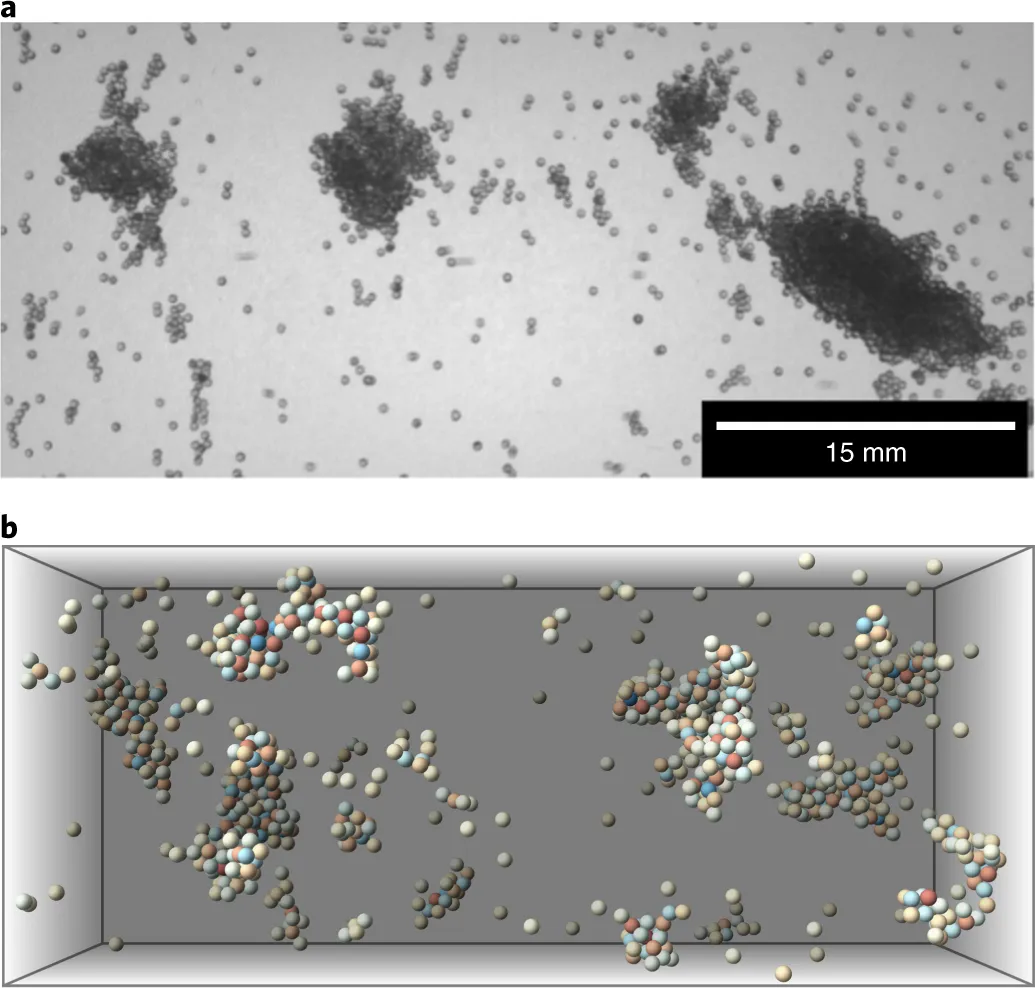Super-Strong Electric Forces May Have Helped Tiny Clumps of Dust Seed the Planets
Lab experiments with glass beads suggest that, early on, space dust couldn’t help but come together
/https://tf-cmsv2-smithsonianmag-media.s3.amazonaws.com/filer/a3/c8/a3c85d5c-712c-4ba9-ae21-dc3c12230459/nasa-exocometsaroundbetapictoris-artistview-2.jpg)
In the beginning, there was nothing. Sort of.
During its early days, the solar system contained little more than gas and dust, whirling around a young, burning star. Eventually, some of those space specks began to clump together, forming larger and larger lumps that ultimately coalesced into the planets we know and love today.
That’s all great in theory, but scientists have long struggled to understand the forces that governed planetary formation. Now, a team of physicists may have figured out a crucial component of the recipe that cooked the planets up from scratch—by shaking a ton of very tiny glass beads and shooting them skyward. In their study, published Monday in Nature Physics, the researchers propose that super-strong electric charges, brought on by the microgravity of space, pulled those early cosmic crumbs together.
The theory sounds straightforward, but it actually helps circumvent a conundrum that’s puzzled physicists for years: the so-called bouncing barrier to planetary formation. When they’re tiny—just micrometers in width—colliding particles have little trouble glomming onto each other. After a while, though, when the clumps are millimeters across, they’ll stop sticking, and instead start to ricochet off each other like billiard balls, stalling their growth, reports Leah Crane at New Scientist.

If the bouncing barrier was never surpassed, the solar system would just be full of celestial pebbles. Obviously, that’s not the case. “There must be a way to get bigger particles,” Tobias Steinpilz, an astrophysicist at the University of Duisburg-Essen in Germany, tells Emily Conover for Science News. So, Steinpilz and his colleagues set out to simulate how early planetary dust cleared this hurdle.
In their study, the researchers used minuscule glass beads, each about half a millimeter wide, as proxies for space dust. To simulate the microgravity conditions of space, they shook the beads up, forcing them to collide, then shot them into the Bremen Drop Tower in Germany, a 400-foot-tall chamber that acts as a vacuum chamber for falling objects.
The pre-fall collisions, the researchers found, built up static electricity between the beads—a lot like the forces that keep living room dust bunnies together. These charges caused the faux space dust to clump as it slowly tumbled back to Earth.
The electric forces were so strong, the team discovered, that some of the aggregations contained more than a thousand beads, measuring more than an inch across. At this size, gravity takes over, smooshing fatter and fatter conglomerates together until they reach the scale of planetary bodies, Crane reports.
Speaking with Conover, astronomer Richard Booth of the University of Cambridge, says the team’s results “clearly show that electrostatic forces help [clumps] grow beyond the bouncing barrier in lab conditions.” But planets aren’t made of glass beads—and there are other, more chaotic conditions unique to planetary formation that even the best microgravity chambers won’t replicate, he adds.
Still, the study demonstrates that blasting through the bouncing barrier is possible, study author Troy Shinbrot, an engineer at Rutgers University-New Brunswick, says in a statement. In doing so, he says, “we may have overcome a fundamental obstacle in understanding how planets form.”
/https://tf-cmsv2-smithsonianmag-media.s3.amazonaws.com/accounts/headshot/10172852_10152012979290896_320129237_n.jpg)
/https://tf-cmsv2-smithsonianmag-media.s3.amazonaws.com/accounts/headshot/10172852_10152012979290896_320129237_n.jpg)